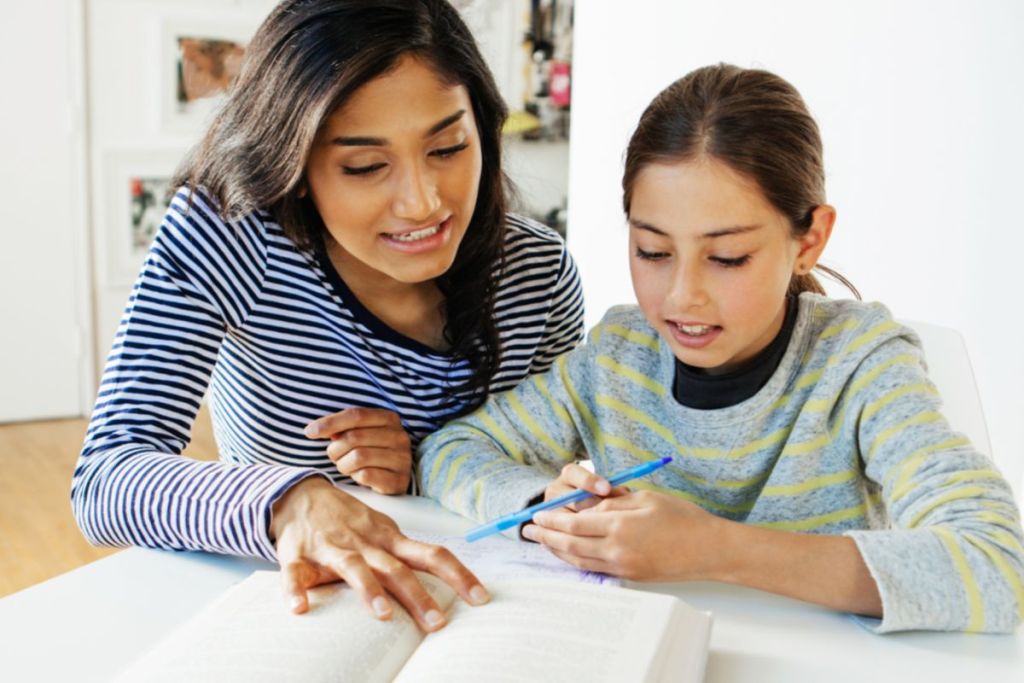There are many different types of dyslexia, but experts have created categories to group them together to more easily identify that individual’s areas of difficulty.
This understanding will allow educators to create strategies specific to the individual’s needs in order to provide optimal support.
What Are The Different Types Of Dyslexia?
Below, we’ve added more information on the different types of dyslexia:
Phonological Dyslexia
The most commonly thought of type of dyslexia is phonological. It deals with difficulties in matching sounds to symbols and breaking down the sounds within language.
Those with phonological dyslexia can experience frustration due to trouble understanding what others are saying.
This can make life difficult both socially and academically if left unchecked.
Symptoms of Phonological Dyslexia may include:
- Difficulty spelling
- Slow reading speed
- Difficulty learning sounds made by letters/letter combinations
- Trouble sounding out unfamiliar words
- Spelling the same word differently on the same page
- Avoidance of reading activities
- Difficulty recognising familiar words in new contexts
Rapid Naming Dyslexia
Those struggling to name colors, numbers, and letters when presented with them may have Rapid Naming Dyslexia.
This type of difficulty in naming could be linked to both reading speed as well as processing time for identifying words.
Symptoms of Rapid Naming Dyslexia may include:
- Difficulty retrieving words
- Slow to respond verbally
- Use of nonsense words in place of real words
- Frequently substituting words or leaving words out altogether
- Using gestures in place of words
Double Deficit Dyslexia
Double Deficit Dyslexia is a combination of Rapid Naming and Phonological Dyslexia, which results in difficulties with naming speed and identifying the sounds in words.
It is largely regarded as the most severe type of dyslexia.
Surface Dyslexia
Those with Surface Dyslexia have trouble recognising familiar words by sight but can sound out new ones easily.
Experts believe that the brain fails to recognise what a word looks like in order to process them quickly enough.
This makes it more difficult for these people who need to memorise frequently used vocabulary instead.
Other names given for this type include visual/dyseidetic dyslexia.
It’s not uncommon for an individual with dyslexia to also have both Phonological and Surface Dyslexia.
Symptoms of Surface Dyslexia can include:
- Slow reading speed
- Difficulty with whole-word recognition
- Spelling difficulty
- Avoidance of reading activities
- Trouble reading words that don’t sound the way they are spelled
- Trouble reading new words by sight
Visual Dyslexia
Visual Dyslexia is a type of learning condition that affects how we process visual information.
The brain doesn’t get all the necessary details from what our eyes see, which impacts both spelling and the ability to recognise and learn new words.
Symptoms of visual dyslexia include:
- Words appearing blurred or going in and out of focus
- Words appearing double or switching between single and double
- Difficulty tracking across lines of text
- Difficulty keeping the place in text
- Headaches and/or eyestrain when reading
Categories Of Dyslexia
Developmental Dyslexia
The most common category is developmental dyslexia, which means it is genetic and/or present at birth.
Developmental dyslexia includes both primary and secondary dyslexia.
Primary Dyslexia
If the dyslexia results from a genetically inherited condition, it is considered primary dyslexia.
A child whose parents have dyslexia has an increased chance of also having dyslexia.
Secondary Dyslexia
Secondary dyslexia is the result of trouble with brain development during the early stages of pregnancy.
Both primary and secondary dyslexia are developmental because the disability is present at birth.
Acquired Dyslexia
When a traumatic brain injury or disease affects the brain’s centres responsible for language processing, the individual can sometimes develop dyslexia.
This type of dyslexia is also referred to as trauma dyslexia because it’s caused by trauma to the brain and is the only type of dyslexia with a known cause.
Other Specific Learning Difficulties Associated With Dyslexia
There are several other specific learning difficulties that a person diagnosed with dyslexia may experience.
These are not types of dyslexia, and experts believe they are neurological in nature.
These specific learning difficulties include:
Dyscalculia
Numbers are something we all deal with in life, but for some people, it’s more difficult than others.
Those who have dyscalculia often have trouble performing accurate math calculations and problem-solving skills as well because they struggle to learn number-related concepts or even basic ones like addition/subtraction tables at an early age on their own without assistance.
Auditory Processing Disorder (APD)
Individuals with APD may have trouble understanding speech that uses different sounds.
This can make it difficult for them to follow the conversation or even hear what people are saying at all. APD is sometimes referred to as auditory dyslexia.
Dysgraphia
Those with dysgraphia may have difficulty with writing and other fine motor skills that affect word spacing, sizing, spelling, legibility, and expression.
Left-right Disorder
This is the inability to remember and identify which hand belongs on what side. This is sometimes referred to as directional dyslexia.
If you think you or your child may have dyslexia, take our free online test or book an assessment here. For any questions, please feel free to get in touch.



